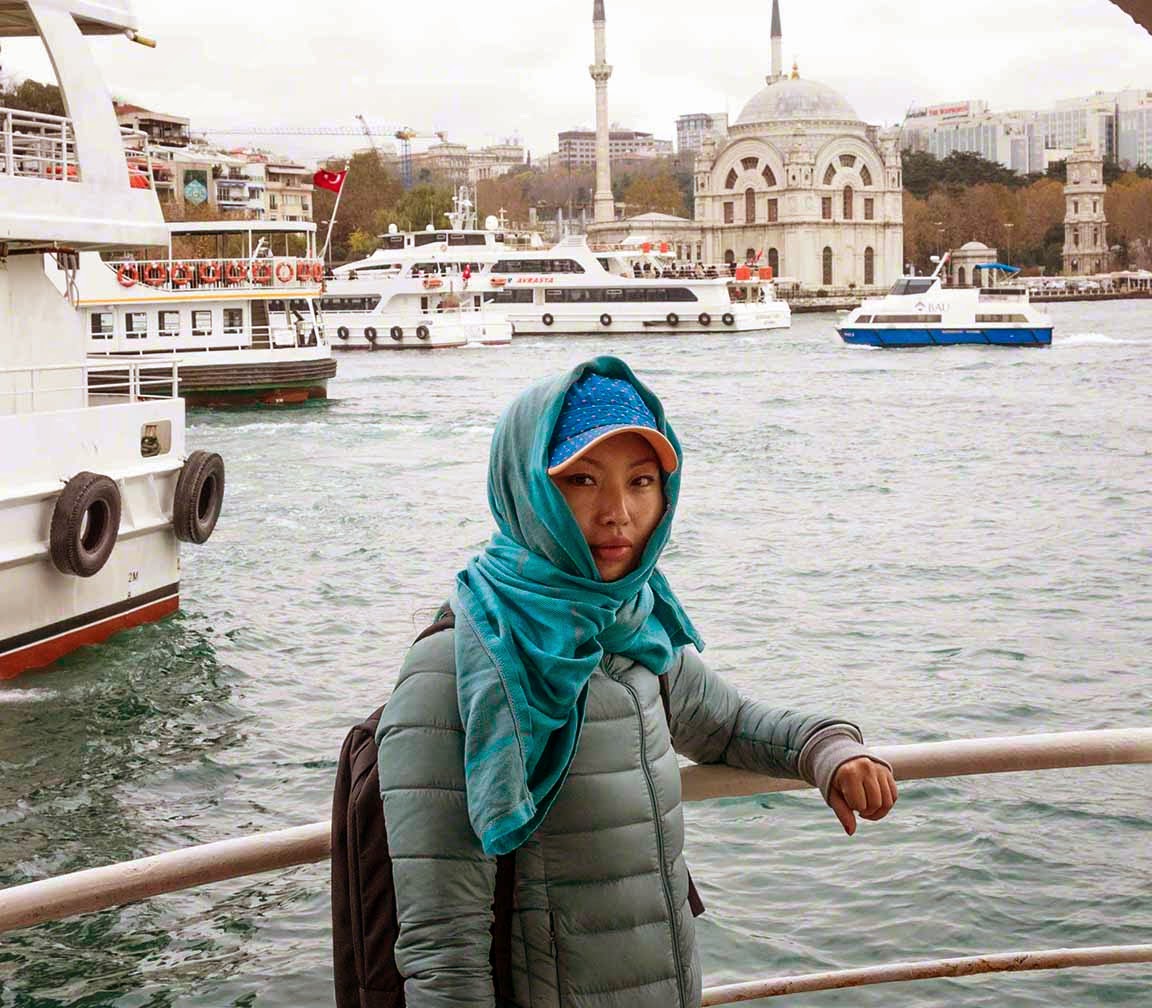I entered a Portal on October 9 and after having spent several weeks in a Parallel Universe emerged just recently in Istanbul, which as cognoscenti know contains a Portal Connected to Shambhala. I reappeared in Istanbul just in time to meet up with my pal Ms. Saraa from Ulaanbaater, who had flown into town on Turkish Airlines for a few days of shopping and R&R.
Ms. Saka at her hotel (click on photos for enlargements)
We hit the streets running. I must say I experienced a different Istanbul than the one I am accustomed to: namely the shopping scene. First we visited the Historia Mall, a huge new complex just up the street from the Aksaray Metro Station. Thank Heavens they had a Starbucks! I parked myself there while Ms. Saka hit the stores. She had already advised me that she did not like people peering over her shoulder while she was shopping. It had recently dawned on me that I knew very little about the Achaemenids who ruled much of what is now Iran and surrounding countries from 550 BC to 330 BC, when their empire was conquered by Alexander the Great. I had brought my Kindle along (actually I never go anywhere with it), and now I took the opportunity to get up to speed on the Achaemenids by reading Matt Water’s marvelously entertaining Ancient Persia: A Concise History of the Achaemenid Empire, 550-330 BCE.
I had already reached the sack of Persepolis by Alexander the Great when Ms. Saka reappeared. After three hours of shopping she had found nothing she liked. So we moved on to the mammoth Forum Shopping Center a few stops further out on the Aksaray-Airport Metro Line. They too had a Starbucks! I finished Ancient Persia and moved on to Alexander the Great and the Conquest of the Persians. By the time Ms. Saka appeared three and a half hours later Alexander was dead. Still she had found nothing she liked.
The next day we went to the Russian shopping district near the Laleli Mosque, not far from the Grand Bazaar. Many of the stores here are wholesale. Ms. Saka finally got down to business. She bought at least fourteen dresses, several pairs of boots, and other assorted items. Most of the dresses she intends to resale in Ulaanbaatar. I spent an enjoyable day listening to women from Russia and the former Soviet republics haggle with beleaguered sales clerks. Although I have not lived in Russia for many years I was able to at least get the drift of most of the conversations. There following three more days of whirlwind shopping. Then finally to the Spice Market area where Ms. Saka bought raisins, apricots, dried cranberries (for kidney ailments), walnuts, both shelled and unshelled (her mother believes tea made from the shells of walnuts are good for the bones), cashews, almonds, and various other fruits and nuts. That concluded the shopping portion of Ms. Saka’s trip.
Now for sightseeing. This was Ms. Saka’s first visit to Istanbul so we hit all the high spots, starting with the square between Hagia Sofia and the Blue Mosque, certainly one of the world’s most iconic tourist venues.
Ms. Saka and Hagia Sophia, built in the 530s AD by the Byzantine Emperor Justinian I.
Ms. Saka and the Blue Mosque, built between 1609 to 1616 by Ottoman Sultan Ahmed I.
The Blue Mosque at night
We also visited the Basilica Cistern, built in the 520s AD to store water for the area around Hagia Sophia. The underground cistern has 336 columns and reportedly can hold over 100,000 tons of water.
The Basilica Cistern
Two of the columns in the cistern rest on bases with carvings of Medusa. This one is on its side. No one know why.
The other Medusa is upside down. Again, no one knows why.
Ms. Saka upside down
The Yeni Cami, or New Mosque, near the Spice Market, completed in the 1660s
Courtyard of the New Mosque
Ms. Saka buying simit from a simit seller
Of course no trip to Istanbul is complete without seeing the Whirling Dervishes at the Mevlevi Hall in Galata, across the Golden Horn from Sultanahmed where Ms. Saka was staying.
Performers prepping for the dance
Whirling, whirling . . .
The morning after the Dervishes we left for Büyükada, the largest of the Prince Islands, located in the Sea of Marmara about an hour’s ferry ride from the main part of Istanbul.
Ms. Saka at the Ferry Dock
On the ferry to the Prince Islands
Ms. Saka
Ms. Saka at the Büyükada (Big Island) ferry station
Ms. Saka strolling the streets of Büyükada. No cars are allowed on the island, so it’s either horse carriages, bikes, or on foot.
Back in Istanbul we visited the famous fish restaurants near the Galata Bridge. Thoroughly sated by Istanbul, Ms. Saka caught the next plane back to Ulaanbaatar. She had arrived with only the clothes on her back but returned with 85 pounds of loot (that’s 38.5 kilos to you insufferable decimal-heads)—not a bad shopping trip!






















